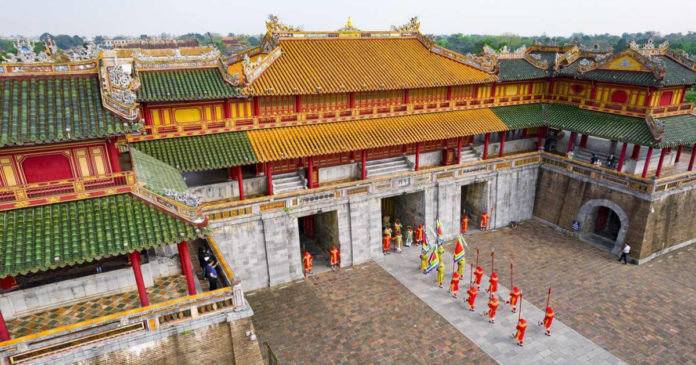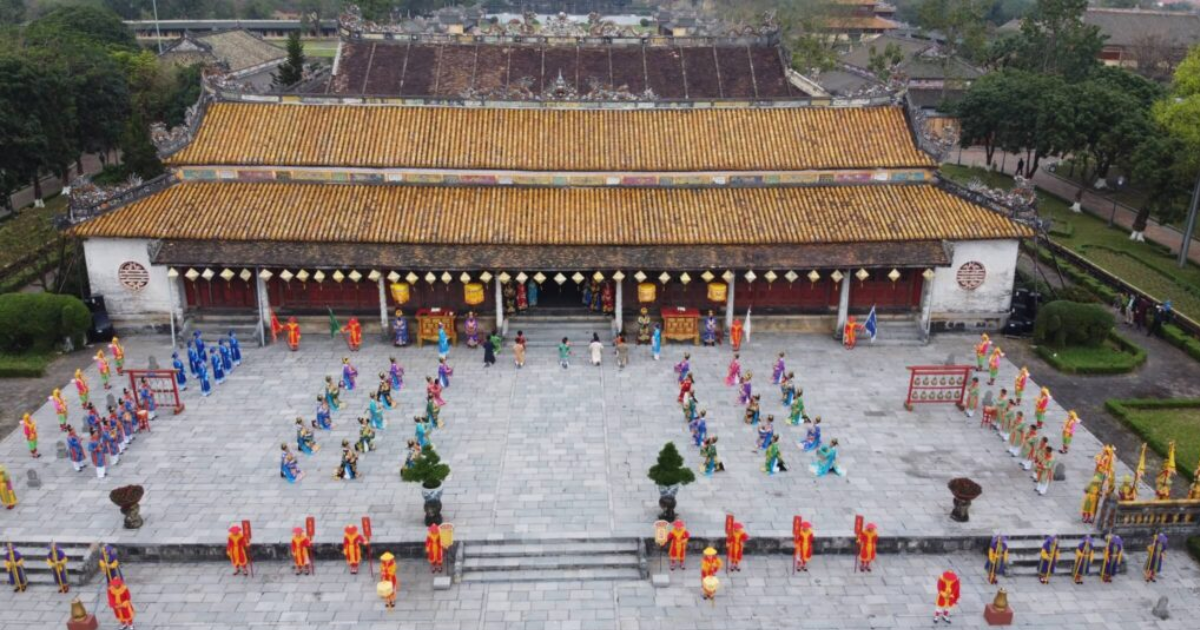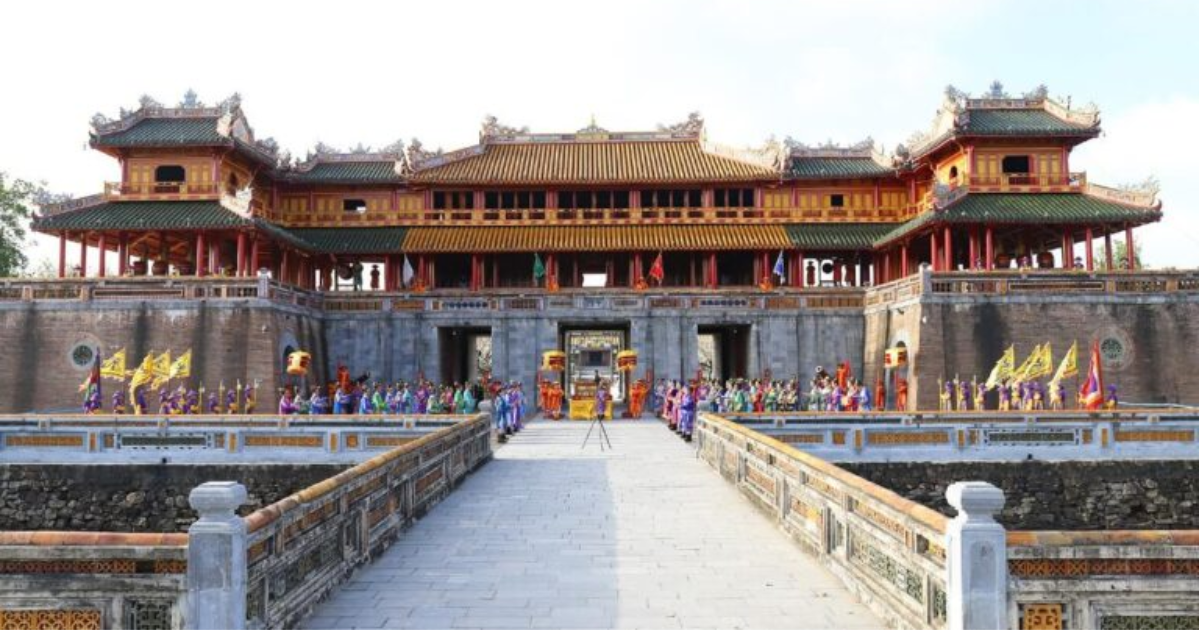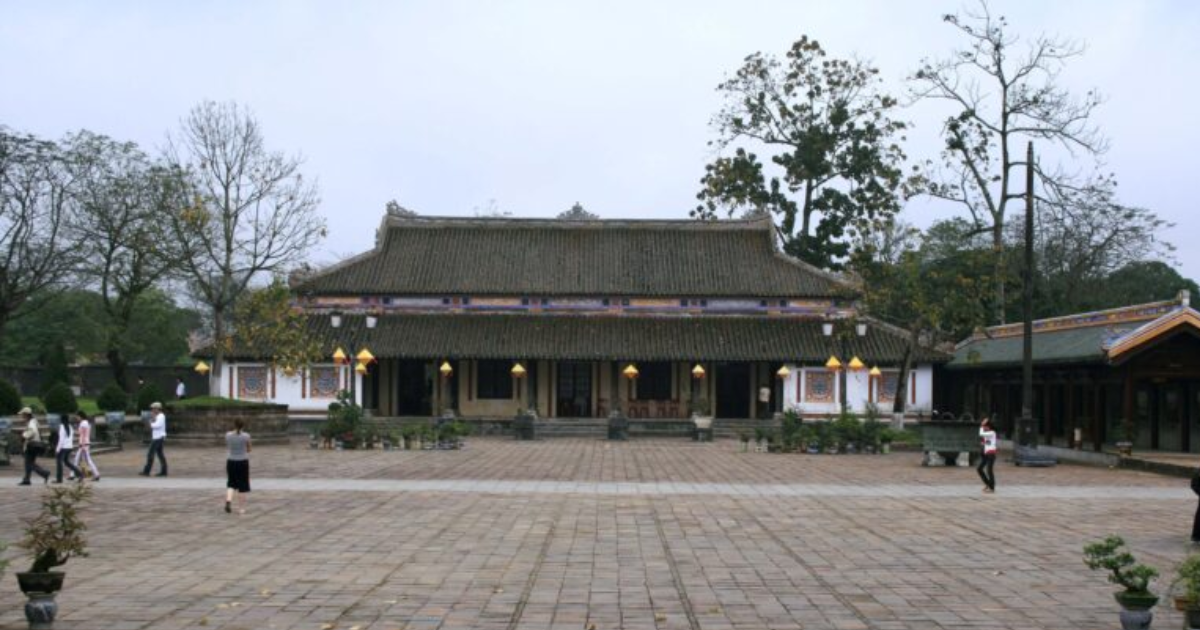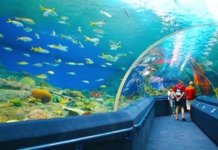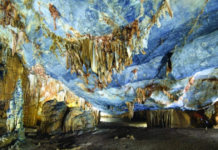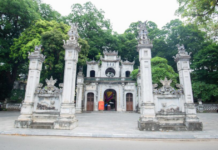The Imperial City of Hue is a proud historical symbol of the ancient capital of Hue, opening a magnificent picture of a golden age deeply influenced by the culture of the Nguyen Dynasty. Quietly located by the poetic Perfume River, the Imperial City is a place that preserves stories of kings, the royal court, and a sense of antiquity that is rare to find elsewhere. Let’s take a closer look at the Imperial City of Hue to understand more about this fascinating place!
1. General introduction to the Imperial City of Hue
1.1. Location of the Imperial City of Hue
Situated along the beautiful Perfume River, in the Thuan Hoa ward of Hue city, Thua Thien Hue province, the Imperial City of Hue is not only a tourist attraction but also a vibrant symbol of the history and culture of the Nguyen Dynasty. This historical site is part of the Complex of Monuments of Hue, renowned for its ancient architecture and tranquil atmosphere, promising visitors an unforgettable experience.
1.2. Area of the Imperial City
The Imperial Citadel of Hue stands majestically on the northern bank of the city, covering an area of over 500 hectares and facing south. This structure is a unique and diverse architectural complex, home to many small buildings that reflect the culture and history of Vietnam’s feudal dynasty, with every corner telling the story of the Nguyen Dynasty.
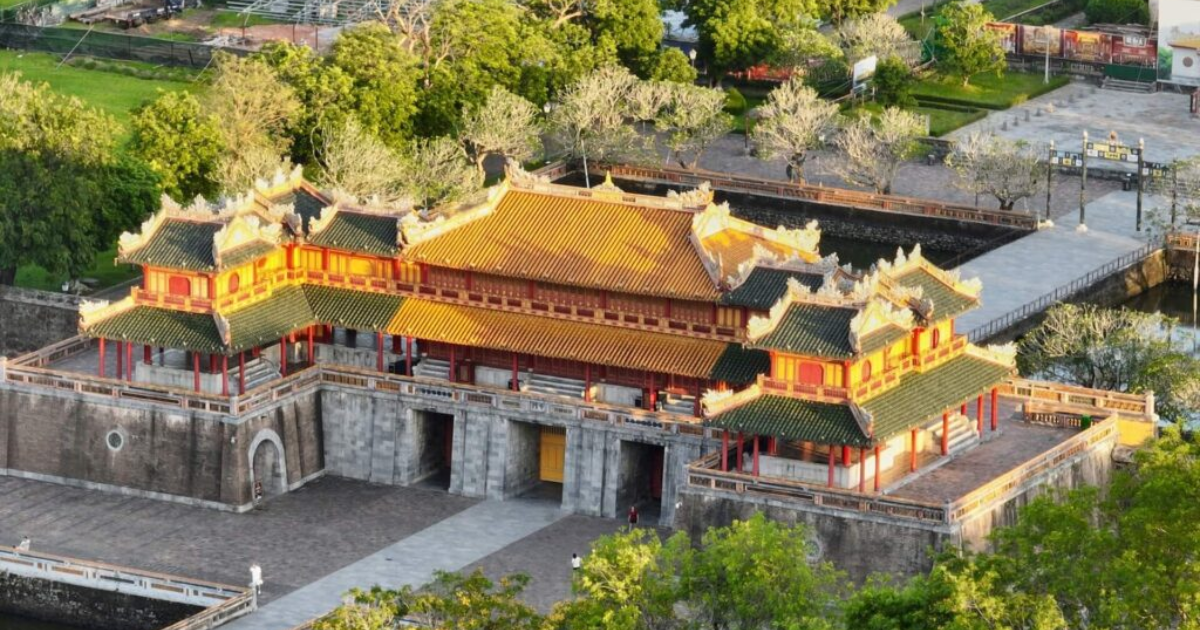
2. The construction of the Imperial City of Hue through the ages
In 1803, when Emperor Gia Long ascended the throne, he realized that Hue possessed a peaceful, picturesque beauty by the Perfume River. Enchanted by the natural beauty of the region, the emperor decided to make Huế the capital of the Nguyễn Dynasty. This decision marked the beginning of a grand project: the Imperial City of Hue.
After more than 30 years of construction and completion, the Imperial City of Hue was finally realized, becoming a distinctive symbol of the ancient capital region. The structure not only reflects a glorious history but also showcases exquisite imperial architecture, harmoniously integrated with the natural landscape of Hue. To this day, the Imperial City remains a unique architectural landmark, preserving the cultural essence of the Nguyen Dynasty’s royal court.
3. Guide to traveling to the Imperial City of Hue
The Imperial City of Hue is located in the heart of Hue city, making it very convenient and quick to reach. With its central location, you can choose from various modes of transportation to explore the ancient and magnificent beauty of the site.
If you enjoy a slow-paced atmosphere, you can rent a bicycle or try the experience of riding a cyclo to take in the scenery—this is especially ideal when traveling with elderly people or children. Taxis or tourist cars are also safe and comfortable options for family trips.
However, for many visitors, motorbikes remain the most popular mode of transport. With reasonable prices and flexibility, you can easily explore every corner and ancient pathway of the Imperial City and experience Huế in your own way.
4. Opening hours and ticket prices for the Imperial City of Hue
4.1. Opening hours
At the Complex of Monuments of Huế, not only the Imperial Citadel of Huế but also most of the other attractions have separate ticket prices for adults and children. In 2023, the ticket prices are as follows:
- Adult admission: 200,000 VND/person
- Child admission: 40,000 VND/person
4.2. Ticket prices
During the summer, the site is open from 6:30 AM to 5:30 PM, providing a wide window of time for visitors to fully enjoy the beauty of the ancient capital. In winter, the opening hours are adjusted to 7:00 AM to 5:00 PM, in line with the cooler weather and shorter daylight hours, creating a peaceful, ancient atmosphere for the heritage exploration journey.
5. Notable architectural works at the Imperial City of Hue
5.1. The forbidden city
5.1.1. Ngo Mon Gate – The majestic gateway and symbol of the imperial power
Ngo Mon Gate is the imposing entrance to the Imperial City of Huế – not just a simple entryway but a monumental architectural masterpiece that carries the marks of its era. This grand structure was designed with solid defensive layers and a surrounding moat system, symbolizing the power of the Nguyễn Dynasty. Having endured nearly two centuries of historical changes, Ngo Mon Gate remains resilient and steadfast, preserving its intricate beauty and becoming a unique symbol in the heart of the Vietnamese people.
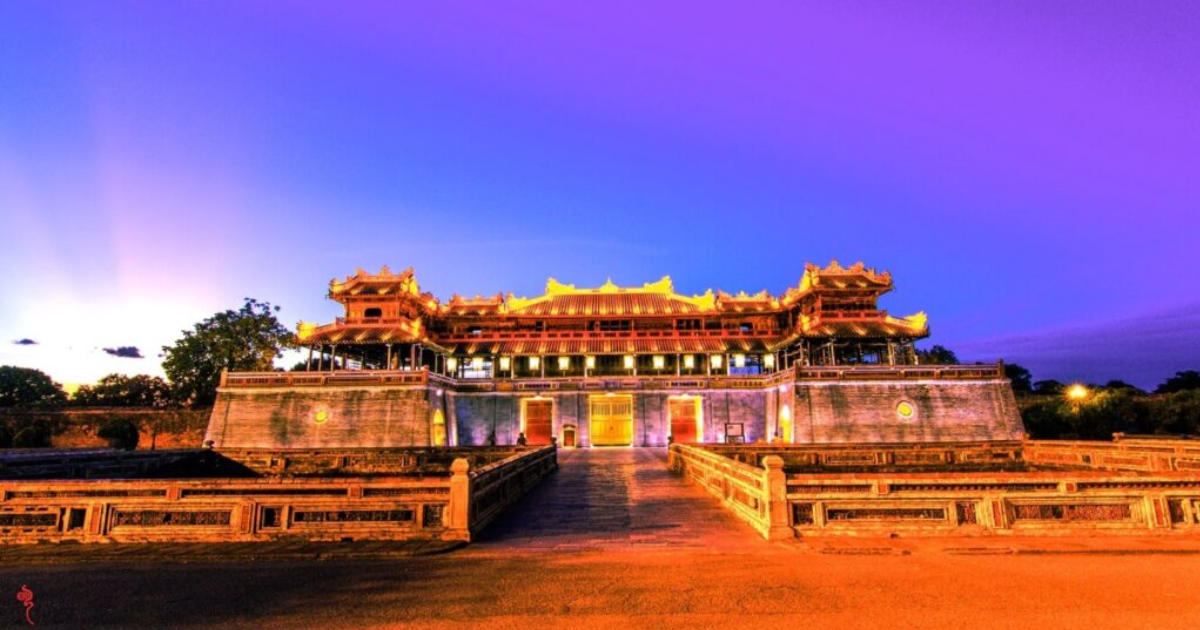
Located to the south of the Imperial City, Ngo Mon Gate faces the tranquil Perfume River, offering a picturesque and majestic view. The gate consists of five entrances, each with its own meaning. The central, large entrance was reserved for the emperor. The two side entrances were designated for civil and military officials, while the outermost gates were used by soldiers and elephants, the dedicated attendants who protected and served the emperor.
Above the gate is the Ngo Phung Pavilion, a two-story structure made of durable ironwood, carefully designed with nine distinct roofs, with the central one adorned in golden tiles, standing out against the green backdrop of the other eight. The Ngo Phung Pavilion is not only an architectural masterpiece but also the site of major royal ceremonies of the Nguyen Dynasty, adding a sense of solemnity and sacredness to the Imperial City.
7. Unique experiences when visiting the Imperial City of Hue
When you arrive in Hue, one experience you shouldn’t miss is taking a cyclo ride around the Imperial City. This is not only an ideal choice for those who prefer not to walk, but it also allows you to save time while discovering the mysterious beauty of this heritage site.
With its vast area and numerous fascinating attractions, the Imperial City becomes more approachable and accessible when you travel by cyclo. For just around 30,000 to 50,000 VND per ride, you can immerse yourself in the tranquil atmosphere, enjoying the beauty of the ancient architecture and nature without feeling tired.
Moreover, choosing a cyclo ride also contributes to environmental protection, helping keep the air cleaner. Take this opportunity to experience a leisurely and meaningful exploration, discovering the Imperial City from a unique perspective that not everyone gets to enjoy!
8. Must-try dishes when visiting the imperial city of Hue
Com Hen and Bun Hen: A taste of humble yet rich flavors
In the heart of Hue city, com hen and bun hen are not just simple dishes, but an unforgettable culinary experience. Despite their humble origins as street food, their flavors are sure to captivate any diner. Stroll through the streets, and you’ll easily find small bun hen stalls where locals gather to enjoy these dishes.
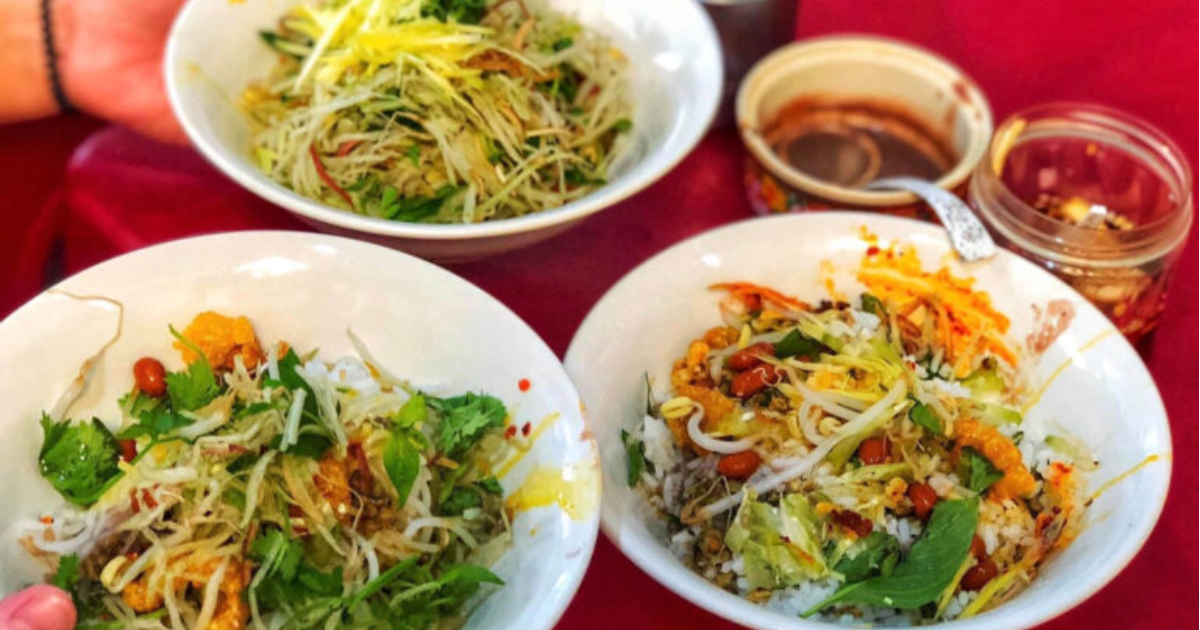
The thick and chewy rice noodles of bun hen blend perfectly with the tender, slow-cooked beef, creating a wonderful combination. A perfect bowl of bun hen includes key ingredients like noodles, beef, pork trotters, fried spring rolls, and boiled blood, all delicately prepared. The broth, made from simmered bones, is sweet and rich, complemented by spicy chili paste and fresh herbs, offering a meal that’s both satisfying and flavorful.
Banh Hue: A culinary symphony
No visit to Hue would be complete without experiencing its rich variety of traditional cakes, the heart of the region’s distinctive cuisine. Here, you can explore an array of delicious cakes such as banh beo, banh loc, banh nam, banh it ram, and banh kep. Each type of cake has its own unique characteristics, from its shape to its flavor, yet they all share a common feature: they are traditionally served with sweet fish sauce, creating a perfect balance of taste.
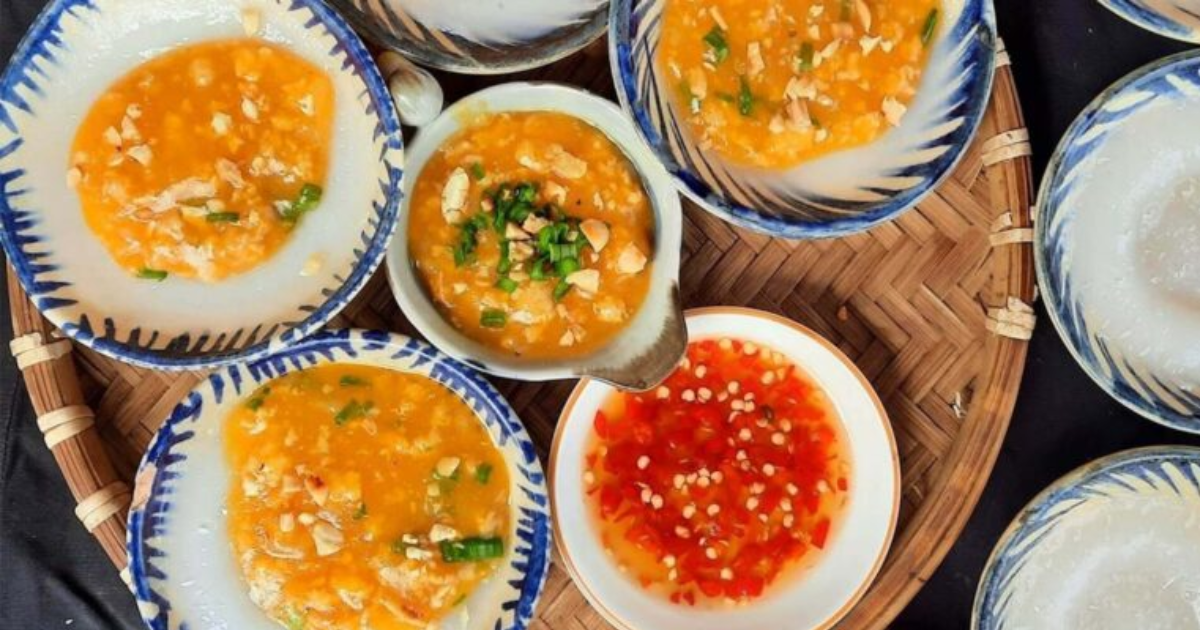
With affordable prices and impeccable flavors, these cakes are the ideal choice for anyone wishing to experience authentic Hue cuisine. Be sure to stop by when visiting the Imperial City of Huế so you don’t miss out on these delightful treats.
In addition to the main dishes, you’ll also find other tempting snacks such as Hue-style che, banh beo, and banh loc, which will further enrich your culinary experience in this city. Come and discover the distinct flavors of Huế for yourself!
9. Important tips when visiting the Imperial City of Hue
The Imperial City of Hue, with its ancient beauty and grand scale, is one of the must-visit destinations when you come to this city. With countless fascinating places to explore, careful preparation is essential before embarking on your journey. Be sure to bring a map and familiarize yourself with the layout of the area to ensure you don’t get lost in this vast and enchanting space.
When visiting, choose light and comfortable clothing to easily move between the sites. Also, remember to maintain politeness and avoid wearing inappropriate attire that may not suit the solemn atmosphere of the place.
Throughout your exploration, don’t forget to follow the rules of the Imperial City of Hue. This includes refraining from taking photos, filming, or touching the displayed artifacts. These rules are in place not only to protect cultural heritage but also to respect the experience of other visitors.
Lastly, remember to maintain cleanliness to help preserve the beauty of the Imperial City. Dispose of trash in designated areas and avoid disturbing the surrounding environment. These small actions contribute to a civilized and memorable travel experience for both you and those who come after you.
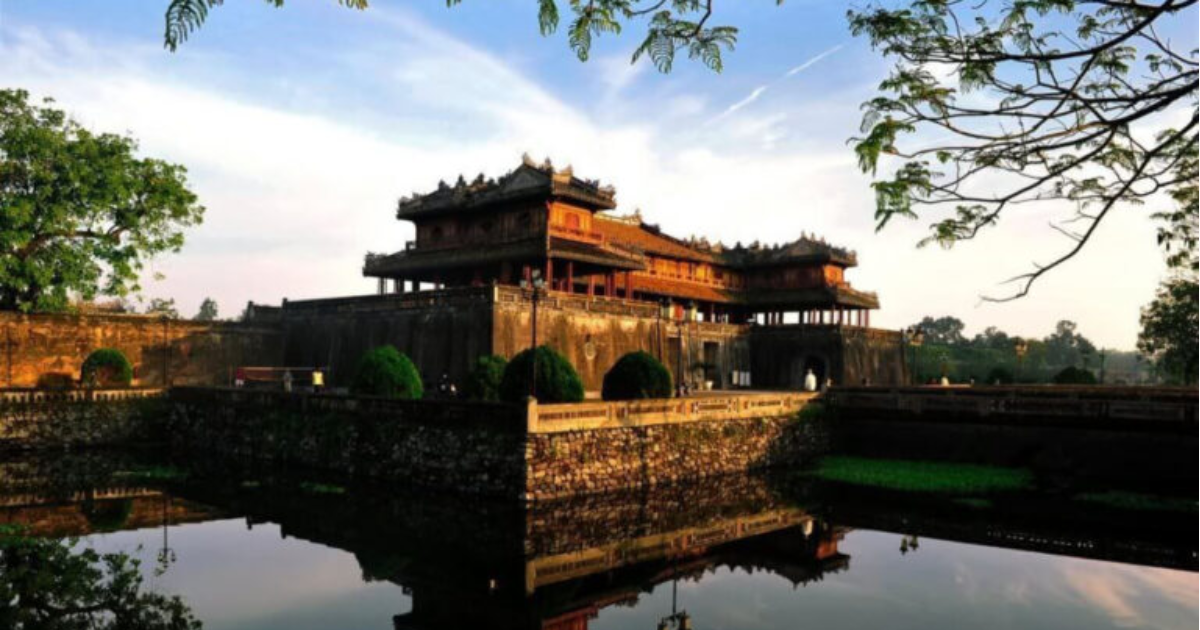
Exploring the Imperial City of Hue is not only a journey through unique cultural heritage but also an opportunity to immerse yourself in the historical and artistic space of the Nguyen Dynasty. From ancient architecture to valuable artifacts, every corner here tells the story of a golden era. Don’t forget to capture unforgettable moments and appreciate the beauty of this ancient capital. Plan your visit today to experience the wonders that the Imperial City of Hue has to offer.


